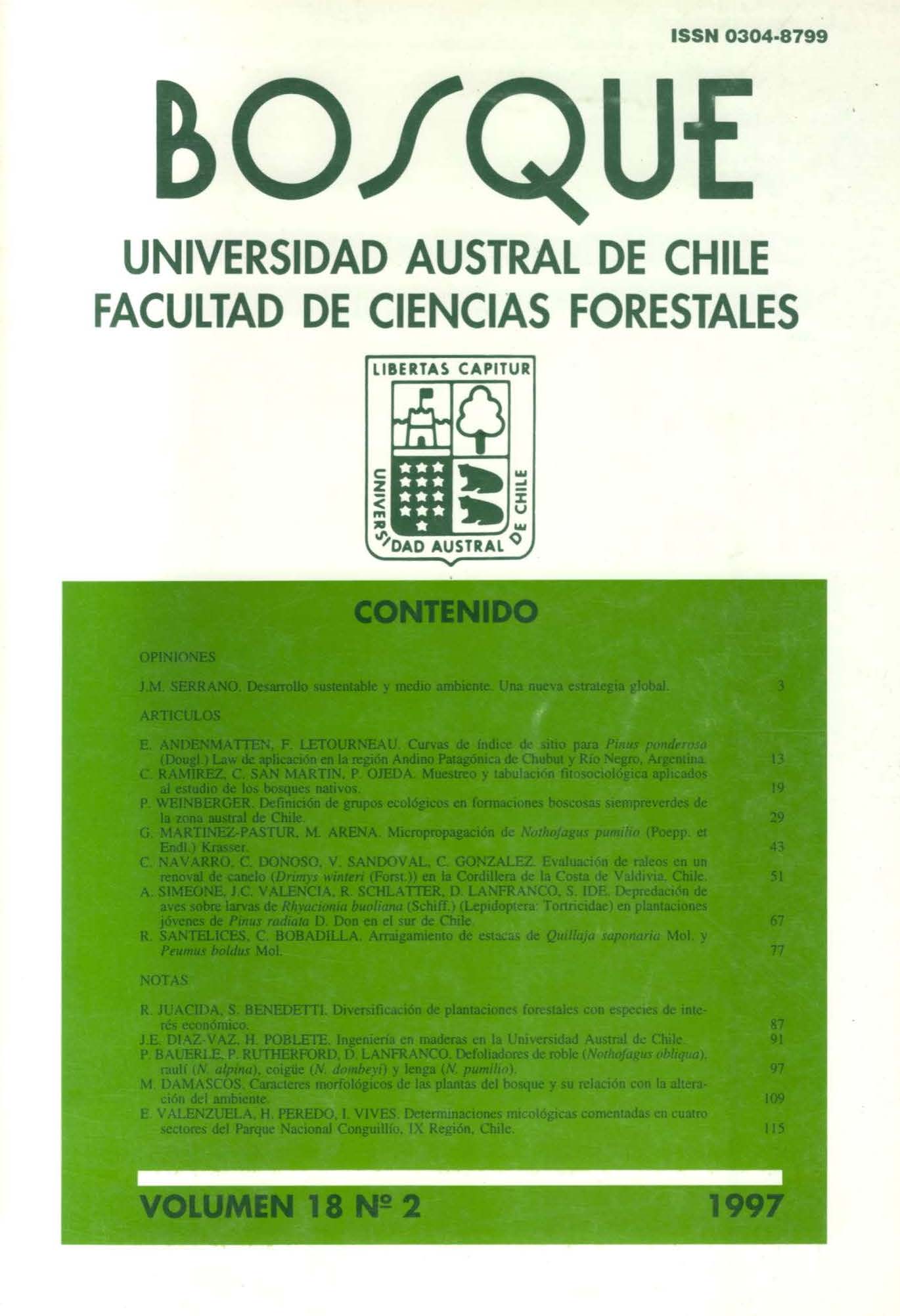Definition of ecological groups in evergreen forest formations of South-Central Chile
Main Article Content
Abstract
An analysis is made of 547 vegetation samples from broad-leaved, evergreen forests, woodlands and scrubs that occur between 37°00' and 43°15'S. Associations among 51 mainly woody species are studied using the chi-square test. By a polar ordination are related the species distribution and environmental gradients (light, humidity, temperature). Nine ecological groups of species are defined: Pioneer plants colonizing open areas of (A) high humidity (swamps), (B) medium humidity, (C) low humidity. Moreover indicator species of closed formations on land of (D) high humidity (subtype of Chiloé), (E) normal drainage (valdivian subtype), (F) sites where ground water trickles but not stagnates; and of transitional communities mediating with (G) formations dominated by Aextoxicon punctatum and/or Nothofagus obliqua (araucanian subtype), (H) those dominated by Nothofagus alpina and/or Nothofagus dombeyi (temperate climate), (J) forests of N. dombeyi or patagonian formations (cold climate).

